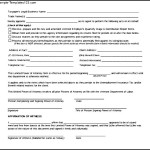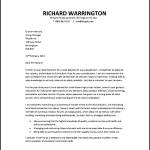Lesson Plan Template For Kindergarten
Kindergarten Lesson Plan Template: A Comprehensive Guide
Creating engaging and effective lesson plans is crucial for successful kindergarten instruction. A well-structured lesson plan acts as a roadmap, guiding teachers through the learning process and ensuring that all essential elements are covered. This guide provides a detailed template and explains each component’s purpose and significance.
Essential Components of a Kindergarten Lesson Plan
A robust kindergarten lesson plan should include the following sections:
- Lesson Title: A concise and descriptive title that clearly indicates the lesson’s focus. (e.g., “Exploring the Letter A,” “Counting to Ten,” “Colors All Around”)
- Subject/Curriculum Area: Specify the subject area covered (e.g., Literacy, Math, Science, Social Studies, Art, Music).
- Date and Time: Document the date and time the lesson is scheduled to be taught.
- Learning Objectives: Clearly defined statements that describe what students will know, understand, or be able to do by the end of the lesson. Use action verbs to make them measurable (e.g., “Students will be able to identify the letter A in both uppercase and lowercase form,” “Students will be able to count objects up to ten,” “Students will be able to name three primary colors”). Write these objectives from the student perspective, focusing on what they will achieve.
- Materials: A comprehensive list of all materials needed for the lesson, including books, worksheets, manipulatives, art supplies, technology resources, and any other necessary items. This section helps ensure that everything is prepared in advance, minimizing disruptions during the lesson.
- Standards: Reference the relevant Common Core State Standards (CCSS) or state-specific standards that the lesson addresses. This ensures alignment with curriculum requirements and accountability measures. Clearly state the standard number and a brief description.
- Differentiation: Explain how the lesson will be adapted to meet the diverse needs of all learners. Include strategies for supporting students who need extra help (e.g., providing simplified instructions, using visual aids, offering one-on-one support) and for challenging advanced learners (e.g., providing extension activities, encouraging independent exploration, facilitating peer tutoring). Differentiation can be applied to content, process, product, or learning environment.
- Assessment: Describe how student learning will be assessed during and after the lesson. This may include observation, questioning, work samples (e.g., completed worksheets, drawings), and informal checks for understanding. Assessment should be aligned with the learning objectives and provide valuable feedback on student progress. Clearly state what you’re looking for and how you’ll document it.
- Procedure: A detailed, step-by-step description of how the lesson will be conducted. This section should be organized into distinct phases:
- Introduction/Hook: How will you grab students’ attention and introduce the lesson topic? (e.g., a captivating story, a thought-provoking question, a hands-on activity). Aim to spark curiosity and connect the lesson to prior knowledge.
- Direct Instruction/Modeling: How will you explicitly teach the new concept or skill? (e.g., using visuals, demonstrating the process, providing clear explanations). Keep it brief and engaging, using age-appropriate language and examples.
- Guided Practice: How will you provide opportunities for students to practice the new skill with your support? (e.g., working through examples together, asking guiding questions, providing feedback). This phase allows you to monitor student understanding and provide immediate assistance.
- Independent Practice: How will you provide opportunities for students to practice the new skill independently? (e.g., completing worksheets, engaging in learning centers, working on individual projects). This phase allows you to assess student mastery and identify areas where further support is needed.
- Closure: How will you summarize the lesson and reinforce key concepts? (e.g., reviewing the main points, asking students to share what they learned, connecting the lesson to future learning). End the lesson on a positive note and provide a sense of accomplishment.
- Transitions: Describe how students will transition smoothly between activities. Clear transitions are essential for maintaining classroom management and minimizing disruptions. (e.g., using songs, rhymes, or visual cues).
- Classroom Management: Outline specific strategies for managing student behavior during the lesson. This may include established classroom rules, positive reinforcement techniques, and strategies for addressing challenging behaviors. (e.g., proximity control, redirection, planned ignoring).
- Reflection: After teaching the lesson, take time to reflect on its effectiveness. What went well? What could be improved? What adjustments would you make next time? This section allows for continuous improvement and refinement of teaching practices. Consider student engagement, the effectiveness of the activities, and the overall achievement of the learning objectives.
Example Lesson Plan Snippets:
Here are some small sections showcasing how parts of the template could be filled out:
Subject/Curriculum Area: Math
Learning Objective: Students will be able to identify and name the numbers 1, 2, and 3.
Materials: Number flashcards (1-3), Counters (e.g., blocks, buttons), Worksheet with number tracing.
Introduction/Hook: Begin by singing a number song (e.g., “One, Two, Three, Four, Five”).
Assessment: Observe students as they count objects and identify numbers. Review their completed worksheets.
Tips for Creating Effective Kindergarten Lesson Plans:
- Keep it Simple: Kindergarteners have short attention spans. Keep instructions clear, concise, and easy to understand.
- Make it Engaging: Use a variety of activities to keep students interested and motivated. Incorporate games, songs, movement, and hands-on experiences.
- Be Flexible: Be prepared to adjust the lesson plan as needed based on student responses and engagement.
- Use Visuals: Visual aids are essential for supporting understanding and maintaining attention.
- Incorporate Movement: Movement breaks can help students stay focused and engaged.
- Provide Opportunities for Social Interaction: Encourage students to work together and learn from each other.
- Focus on Play-Based Learning: Integrate play into the lesson to make learning fun and meaningful.
By using a comprehensive lesson plan template and following these tips, kindergarten teachers can create engaging and effective learning experiences that foster student success.
Lesson Plan Template For Kindergarten :
Lesson Plan Template For Kindergarten was posted in October 19, 2025 at 4:55 am. If you wanna have it as yours, please click the Pictures and you will go to click right mouse then Save Image As and Click Save and download the Lesson Plan Template For Kindergarten Picture.. Don’t forget to share this picture with others via Facebook, Twitter, Pinterest or other social medias! we do hope you'll get inspired by SampleTemplates123... Thanks again! If you have any DMCA issues on this post, please contact us!




